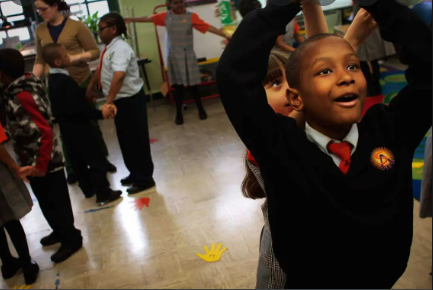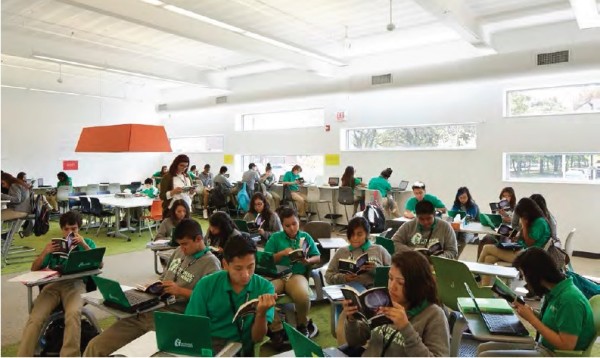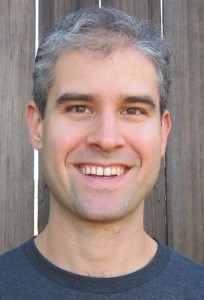
City Academy in St. Paul, Minn., became the nation's first publicly funded, privately run charter school when it opened its doors in 1992. Its founders, all veteran public school teachers, had tried but failed to create new programs for struggling students in their own schools.
On the most recent bi-weekly episode of the education podcast Class Disrupted, Michael Horn, senior strategist at Guild Education and founder of the Clayton Christensen Institute, and Diane Tavenner, CEO and co-founder of Summit Public Schools in California and Washington State, take the opportunity to discuss charter schools as they face challenges in the Beltway.
The two education choice advocates revisit the original 1992 California Act that created charter schools in the state, then discuss how the promise and potential of charter schools has lived up to the theory. From there, they imagine what the future might hold for charter schools.
You can listen to the podcast and read a transcript here.
 In this video special to redefinED, author and education reformer Michael Horn talks with education pioneer Julie Young, the founder of Florida Virtual School, a student-centered online-learning provider that focuses on competency based education rather than traditional seat time. Julie is now the CEO of Arizona State University Prep Digital, an online high school that offers an accelerated path toward college admission and the chance to earn concurrent high school and university credit.
In this video special to redefinED, author and education reformer Michael Horn talks with education pioneer Julie Young, the founder of Florida Virtual School, a student-centered online-learning provider that focuses on competency based education rather than traditional seat time. Julie is now the CEO of Arizona State University Prep Digital, an online high school that offers an accelerated path toward college admission and the chance to earn concurrent high school and university credit.
Horn and Young discuss the ways in which COVID-19 is a moment for teachers and families to transform learning. They also discuss a new online learning case study Young co-authored that has been published by the Pioneer Institute.
“Right now, it's about the fundamentals. Anything that is remotely filler needs to go away. What are the standards we need to meet to feel as if we have accomplished what we need for this school year? Let's look closely at that and focus our plans around it."
EPISODE DETAILS:
· How Arizona State University moved to full remote learning within 48 hours and the active role the university has taken in lending support to other schools
· What states and school districts should be doing to move from the crisis of shifting to distance learning toward a more stable, sustained distance learning future
· Preparing for a variety of fall schooling scenarios based on the virus’ effect, including continuing full-time remote learning for those who want it
· The benefits of mastery-based education models for students with unique abilities
· Incorporating social and emotional learning into the distance-learning model
LINKS MENTIONED:
ASU for You: Resources for every learner, at any age
Pioneer Institute – Case Study for Transition to Online Learning

A picture from Chicago's Intrinsic Schools, from a blended-learning presentation given to a state House panel. Do regulations bar Florida schools from building a classroom like this?
Blended learning is beginning to change the way schools are run, and even the way they're built. But Florida schools may be hamstrung by building codes, class-size penalties and outdated teacher-preparation programs, members of a state House panel said Thursday.
"I think our role is to get the roadblocks out of the way," said Rep. Manny Diaz, R-Hialeah, who chairs the House education panel on school choice and innovation.
The panel heard from Michael Horn of Clayton Christensen Institute, who has studied blended learning around the country. He told the panel via Skype that combining virtual education with in-person instruction can allow students to learn at their own pace, and give educators more flexibility.
School buildings designed with blended learning in mind often include open floor plans that cost less to build, slash energy costs and create more engaging learning environments, Horn said. They also lend themselves to different staffing models. In some cases, he said, teachers eschew traditional classes and work together in teams, allowing experienced "master teachers" to work with larger numbers of students. (more…)
 File this under things to keep an eye on for the rest of this school year: Over the next month, providers can start registering to offer classes for Florida's new course access program.
File this under things to keep an eye on for the rest of this school year: Over the next month, providers can start registering to offer classes for Florida's new course access program.
The program was codified by the state Board of Education at its November meeting. When it was first conceived, as part of 2013's digital learning legislation, a lot of the initial hype centered on the fact that the law opens the door to high school students taking Massive Open Online Courses, or MOOCs, for credit in a select few courses covered by statewide end-of-course exams.
But its real significance goes beyond that.
Some education advocates see programs like the Florida Approved Courses and Tests Initiative as a new way to unleash entrepreneurial teachers and give students another way to customize their education that goes beyond simply choosing where they go to school. Maybe they're in one of Florida's 11 school districts without a physics course available. Maybe they just don't click with their assigned teacher. They might have some digital courses already available to them, but if things go as planned, those options should expand once the initiative debuts during the 2015-16 school year.
The same legislation that created FACTs also led to the creation of the course catalog and allowed students to take online courses across district lines. Taken together, these policies are enabling Florida's foray into course access — a term for programs that use technology to let students customize their education. It's a hot topic in education policy circles now, and was the subject of a panel discussion at last week's National Summit on Education Reform.
John Bailey, the vice president of policy at the Foundation for Excellence in Education, said the basic idea is that even students who attend a traditional campus can customize the courses they're taking by supplementing them with courses outside their geographic area.
Some of the seeds of Florida’s virtual education system were sown more than two decades ago, at a Fort Myers elementary school, where Julie Young was running an IBM Writing to Read lab.
Students in the lab at San Carlos Park Elementary would move from one station to the next, using computers to explore concepts in different ways, tailored to different modes of learning. It was, Young said, "a blended classroom on steroids,” but years before blended learning became the hot topic it is now.
When, a few years later, the Orange County school district tapped Young to help lead the institution that became Florida Virtual School, that background had already given her an idea of what was possible.
“I had the opportunity to see the technology advancing for several years before I started to do this,” she said in an interview. "You could see a bit into the future, and know that it was coming.”
And by now, it clearly has arrived. Young said that is one reason she feels comfortable stepping down in June after 17 years at the helm of an institution that helped pave the way for online education around the country.
What started as a $200,000 grant project has grown into an award-winning juggernaut that annually serves more than 200,000 students. Students in the state are now required to take at least one of their courses online before they graduate. Last year, the full-time virtual education program bid farewell to its first graduating class, of about 275 seniors.
In other words, Florida Virtual School, like virtual education more broadly, has blossomed into maturity.
Many hands led to the creation of FLVS – from educators like Linda Hayes, a Central Florida computer science teacher who helped come up with the original concept, to state education leaders like Frank Brogan and John Winn, who helped design the policies that sustained it.
But it was Young who guided the institution that became a new model for education – one that maximizes technology to customize learning for individual students, that focuses on competency rather than “seat time,” that links funding directly to student success, and that makes more than 1,000 teachers available to students 12 hours a day.
Jeb Bush, who was governor during the school's early growth, recently called Young the "godmother of digital learning." Another early supporter, former Florida House Speaker and now U.S. Rep. Daniel Webster, R-Orlando, recognized her 30 years in public education with a statement for the congressional record.
"It was really a far-sighted option that they put in place. I think Julie had a lot do with making that (possible)," said Tom Vander Ark, an author and venture capitalist who serves with Young on the board of the International Association for K-12 Online Learning. "It's just, from top to bottom, inventing a new form of education," he added. "It's still, 17 years later, the best example in the country." (more…)
 Perhaps the most far-reaching education legislation in Florida this year isn’t getting much attention, overshadowed by bills like the parent trigger. But buzz or no, the quietly cruising “course choice” proposal is on the leading edge of a revolution in online learning.
Perhaps the most far-reaching education legislation in Florida this year isn’t getting much attention, overshadowed by bills like the parent trigger. But buzz or no, the quietly cruising “course choice” proposal is on the leading edge of a revolution in online learning.
It takes school choice and “puts it on steroids,” said Michael Horn, a leading thinker on digital education, in the redefinED podcast below.
The course choice bills in Florida are sponsored by Sen. Jeff Brandes, R-St. Petersburg, and Rep. Matt Gaetz, R-Fort Walton Beach. They would allow providers from virtually anywhere to create state-approved courses in K-12 and higher ed, and students from virtually anywhere in Florida to take them.
Together with other online learning advances, the bills will have repercussions on how, when and where students learn; how they’re tested and funded; and how school districts fare against growing competition from charter and private schools. Things like course choice and MOOCs, Horn said, “just blow up the geographic … scheme we’ve had for where someone goes to school.”
“So actually, wherever you are, you can get the best class for you. And there will always be that for you. Because you may love the MIT course. I may love the one that has a couple Sal Khan videos … But why shouldn’t we have that best experience for us?”
This doesn’t spell the end for school districts, Horn said. In fact, it could give them a boost. (more…)
Oh how the blog gods have smiled down upon redefinED.
The 2012 Republican National Convention will be held in downtown Tampa this month – six blocks from the building that houses Step Up for Students and our humble blog. I received press credentials to cover the convention. And next week, as a lead-up to the event, we’ll be posting essays from some of the leading voices in school choice and education reform.
Here’s the line up: former U.S. Secretary of Education Margaret Spellings; Chester E. Finn, Jr., president of the Thomas B. Fordham Institute; Robert C. Enlow, president and CEO of the Friedman Foundation for Educational Choice; Joe Williams, executive director of Democrats for Education Reform; Michael B. Horn, executive director for education at the Innosight Institute; and Eva S. Moskowitz, founder and CEO of Success Academy Charter Schools.
With the RNC and November elections as a backdrop, we asked our contributors what – if anything – the federal government can do to promote school choice. It goes without saying that the responses are thoughtful, insightful and informative. They’re also diverse. They’ll give you plenty to think about – and even a few things to laugh at.
First up Monday: Secretary Spellings.